![]()
First World War
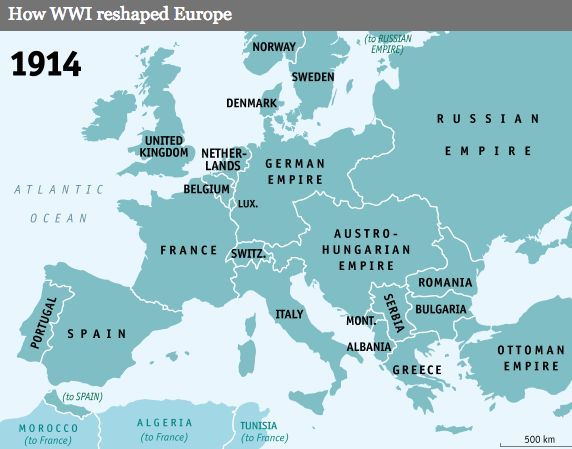
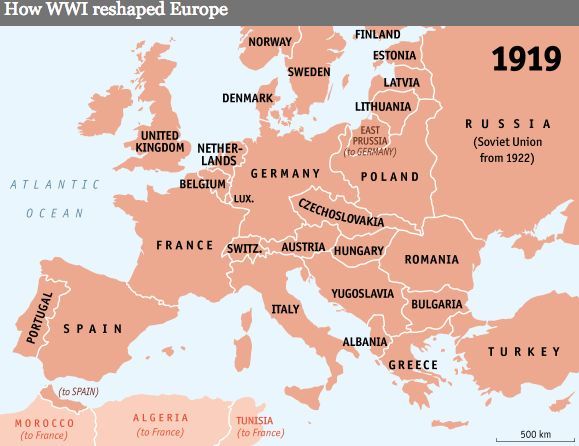
30 June
2019: Opened on 28 June 2019 an exhibition in
Arras organized by the Palace of Versailles starts with the proclamation of the
German Empire in the same Hall of
Mirrors that witnessed the Signing of Peace of Versailles on 28 June 1919.Today
most historians agree however that contrary to earlier legends it was the First
World War itself, not the treaty that concluded it, that set loose the forces
and ideologies that would convulse Europe and initiate another global conflict.
And that for all of Versailles’ problems, it represented a clear end to a major
war in a way that we rarely see today. The
tribulations and consequences of the Treaty of Versailles.

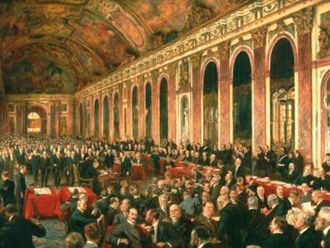
15 Nov.
2018: While the previous graphic about the
First World War shows that most lives were lost on the battlefields throughout
East and Western Europe, the role of the war in shaping and creating the
state-system of the modern Middle East merits much more than an afterthought.
The Ottoman Empire and the Allied Powers signed an armistice on October 30,
1918, which was supposed to end hostilities, even before the armistice in
Europe was signed. But the wars in the Middle East didn’t stop with the
armistice. Why World War I was pivotal to the
creation of the modern Middle East.
4 Aug.
2018: On 11 July 2017 I reported the strivings
of Woodrow Wilson during the Versailles deliberations in reference to Eastern
Europe and in particular also Poland. To this one could add that not of little
importance was the Japanese invasion of Manchuria and the Mukden Incident.
Shantung the Versailles Treaty and the Manchurian episode. Shantung the Versailles Treaty and the Manchurian episode.
With the approach of
the centenary of the outbreak of the Great War, attention will focus again on
the ‘origin’ of the First World War.
Following is the story of an unnecessary tragedy - one that can be
understood only by retracing the steps taken by those who went down the road to
war. Almost every day it seemed possible that the crisis could be settled as so
many had been over the previous decade; almost every day there was a new
suggestion that gave statesmen hope that war could be avoided without abandoning
vital interests. With each passing day,
we see how the personalities of leading figures such as Kaiser Wilhelm II, the
Emperor Franz Joseph, Tsar Nicholas II, Sir Edward Grey, and Raymond Poincaré were central to the unfolding crisis, how their
hopes and fears intersected as events unfolded, and how each new decision
produced a response that complicated or escalated matters to the point where
they became almost impossible to contain.
A new investigation why the First World War
broke out.

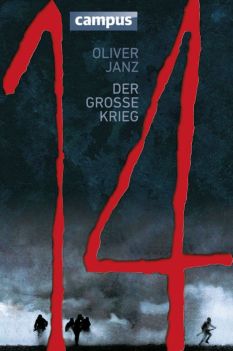
The Real Russian Origins of the
First World War
Following Christopher
Clark's bestseller The Sleepwalkers, about the origins of WWI and where Clark
revived the revisionist argument of the 1930's, a new discussion has ensued
about who and what started the war of which the consequences are very much present
today. Having embarked on a detailed investigation, we now present a concluding
set of new answers. One of the issues covered in this first part is that an
initial Memorandum of 24 June, before the Sarajevo murder even took place, had
already anticipated a war in the Balkans. Major Case Study: What led to the Frist World War P.1.
It has been noted
that the killings of Archduke Franz Ferdinand and his wife in Sarajevo had
caused nothing - what brought the war about was the use made of this event.
Earlier in Germany on 21 June, the Kaiser talked to the Hamburg banker Max
Warburg, expressing his concern about Russia's rearmament program and
prioritization of its railway construction. He was "more nervous than
usual", anticipating that Russia's preparations might lead to war by 1916,
and wondering whether it would not be better "to strike out, instead of
waiting". Major
Case Study: What
led to the Frist World War P.2.

On the famous 6 July
the Austro-Hungarian representative told the Chancellor of Germany that,
although Austria-Hungary considered a military clash with Serbia unavoidable
sooner or later, it was prepared to content itself for the time being with
closer ties to Bulgaria - "in case Germany believed that a later moment
would be more favorable from a European point of view." This would have
meant no war at all, local or otherwise, in the summer of 1914, but Bethmann
Hollweg reacted immediately to squash this option, promising Germany's
"entire might" if Austria-Hungary deemed it necessary to proceed
against Serbia. Major
Case Study: What led to the
Frist World War P.3.
In the calculations
of Germany’s leaders, the crisis was a golden opportunity to test the Entente
which they perceived as encircling Germany and its weakening ally
Austria-Hungary. The smoking gun, denied by Christopher Clark, in the story of
July 1914 is to be found in Bethmann Hollweg's refusal even to consider the
scenario put to him by Count Hoyos that Austria-Hungary would desist from
attacking Serbia if Germany considered the moment to be unfavorable. Or as Kurt
Riezler the top-level cabinet adviser who became the
closest confidant and advisor to German Chancellor Theobald von Bethmann
Hollweg wrote that; “At least people must concede that he ‘staged’ it [the war]
very well. Besides, the war, though not actually willed, was precisely
calculated and broke out at the most favorable moment.” What
led to the First World War P.4.
During the First
World War, British strategy for the Middle East was aimed at protecting India,
which meant keeping India’s numerous Muslim subjects tranquil. Initially, this
gained Whitehall’s support, as it feared foreign troops in the Muslim Holy Land
would make the followers of Hussein, the Sharif of Mecca, Emir of the Hejaz and
potential British ally, oppose him. From Versailles to the Making of the Modern
Middle East P.1: The ‘Arab revolt’, Britain, and the Collapse of the Ottoman Empire in
the Middle East.
Mark Sykes returned
to England where, almost immediately, he was thrust into negotiations with M.
Charles François Georges-Picot, French counselor in London and former French
consul general in Beirut, to try to harmonize Anglo-French interests in ‘Turkey-in-Asia’.
Picot on the other hand had ‘expressed complete incredulity as to the projected
Arab kingdom, said that the Sheikh had no big Arab chiefs with him, that the
Arabs were incapable of combining, and that the whole scheme was visionary.'
From Versailles to the Making of the modern Middle East P.2: The Arab question and the ‘shocking document’ that shaped
the Middle East.
The rebellion sparked
by the Hussein-McMahon correspondence; the Sykes-Picot agreement; and memoranda
such as the Balfour Declaration (to be dealt with in detail) all have shaped
the Middle East into forms which would have been unrecognizable to the diplomats
of the 19th century. From Versailles to the Making of the modern Middle East
P.3: The
Menace of Jihad and How to Deal with It.

French rivalry in the
Hijaz; the British attempt to get the French government to recognize Britain’s
predominance on the Arabian Peninsula; the conflict between King Hussein and
Ibn Sa’ud, the Sultan of Najd; the British handling
of the French desire to take part in the administration of Palestine; as well
as the ways in which the British authorities, in London and on the spot, tried
to manage French, Syrian, Zionist and Hashemite ambitions regarding Syria and Palestine.From Versailles to the Making of the modern
Middle East P.4: The ‘Arab’ and the ‘Jewish’ question.
The British
authorities in Cairo, Baghdad, and London steadily lost their grip on the
continuing and deepening rivalry between Hussein and Ibn Sa’ud,
in particular regarding the possession of the desert town of Khurma. British warnings of dire consequences if the
protagonists did not hold back and settle their differences peacefully had
little or no effect. All the while the British wanted to abolish the Sykes–
Picot agreement. From Versailles to the Making of the modern Middle East P.5: The Syrian question.
This is the most
important and longest part. Following, a gripping account of the swashbuckling
during the Paris Peace Conference deliberations including the Arab/Syrian, the
King-Crane Commission, impasses and some breakthrough at the end. From Versailles
to the Making of the modern Middle East P.6: The
Paris Peace Conference deliberations.
One of the most
far-reaching outcomes of the First World War was the creation of Palestine,
initially under Britain as the Mandatory, out of an ill-defined area of the
southern Syrian boundary of the Ottoman Empire. Considering this, on 16 Nov.
2016, the British Parliament debated the Balfour Declaration and how its
upcoming 2017 Centennial should be handled. Yet even professionals are often
not familiar with the details surrounding the Balfour Declaration, thus here a
detailed investigation. The true history of the Balfour Declaration
and its implementations P.1.
Showing the topic is of
ongoing relevance, following the British Parliament last week, tomorrow a
discussion about the Balfour Declaration is to take place in the House of
Commons. My analysis, however, is wholly independent of pro or contra stance
and instead focuses on discovering the historical details that have been left
out in recent discussions. The true history of
the Balfour Declaration and its implementations P.2.
Apart from the strategic
consideration that they needed Palestine for the imperial defense of India, the
decision by the War Cabinet to authorized foreign secretary Balfour to make a
declaration of sympathy with Zionist aspirations in November 1917, one could
ad, was also a curious blend of sentiment (the romantic notion of the Jews
returning to their ancient lands after 1,800 years of exile) and anti-
Antisemitism (world Jewry was a force that could vitally influence the outcome
of the war) also led them to this decision.
The true history of the Balfour Declaration and
its implementations P.3.

29 November 2016 discussion about the Balfour
Declaration at the British Houses of Parliament.
As we have seen, in
the end, the idea was to use President Wilson’s recognition of the Balkan
nations’ right to self-determination – namely, freedom from Ottoman rule – to
overcome his opposition to the implementation of this same policy in the Middle
East. By supporting Zionist aspirations in Palestine, the Lloyd George
Government thus strove to compel Wilson to expand his policy regarding the
'small nations' from the European regions of the Ottoman Empire to its Asian
territories. The true history of the Balfour Declaration and
its implementations P.4.
From Versailles to the
Making of the Modern Middle East P.8: British rule, Arab
Spring-revolt, and the Syria crisis today.
Sykes-Picot granted
Britain the right to administer Syria after it captured the Levant from the
Ottomans in 1918.In 1919, London conceded at the Paris Peace Conference both
Levantine entities to France that moved quickly and, aware of Hashemite
progress, settled on creating Greater Lebanon. From Versailles to the Making of
the Modern Middle East P.7: The unresolved
sectarian issue in Lebanon today.
The profound effects
of the British Empire’s actions in the Arab World during the First World War
can be seen echoing through the history of the 20th century. From Versailles to
the Making of the Modern Middle East P.6:
The importance of oil, the ‘Arab question’, and
the British.
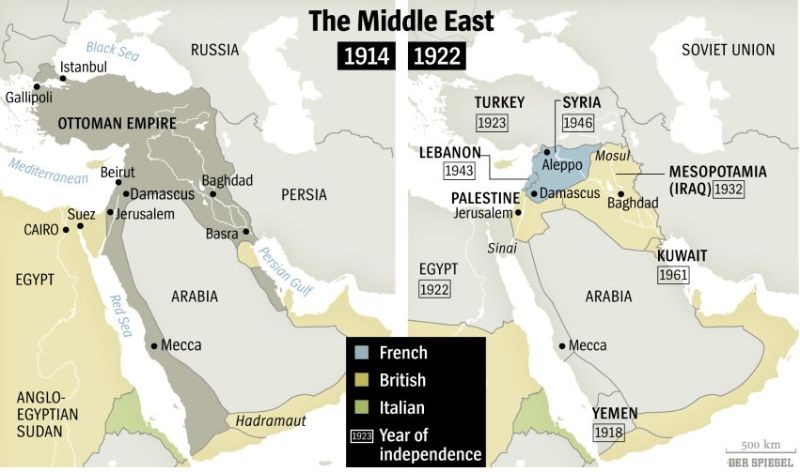
The Great War was
seen as a clash of civilisations and a contest of
rival `national' values and virtues which the clergy, together with the broader
educated classes, helped shape. WWI's
Religious Ideology.
There is also no
doubt that at the heart of WWI was also a colonial war about resources: From Colonization to de-Colonization.
Underneath, a photo
of the tomb in Damascus with Kaiser Wilhelm II 's remains in the Mausoleum of
Salah Al Din, with on the right a newspaper illustration at the time showing
Wilhelm II with his wife seated in Damascus, before his declaration in the Great Mosque.
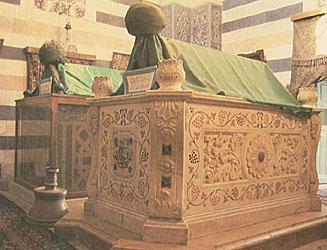
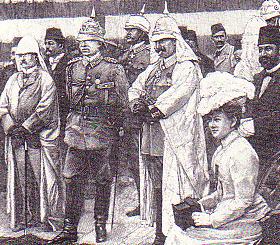
That WWI was very much a colonial war is evidenced by the following three
color pictures taken in France that time and the image of the WWI German plane
in Egypt bottom left. Also it has long been known that it was not the murder of
Franz Ferdinand that ignited WWI but rather Germany's generals (von Moltke in
particular) who perceived that since war with Russia seemed
inevitable later on, it was better to do it now. Then September 2004, a path
braking analysis of newly researched documents from the German Secret Service “Skrupullos” by Helmut Roewer took this a step further.
From Shandong to Versailles: China's
participation in the First World War
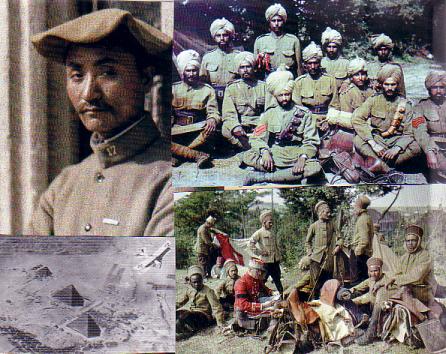
Globalizing
technologies is one of the issues that played a role and for example served to
intensify relations among Anglo-Americans and indigenous populations. The 1820s
and 1830s witnessed the economies and technological transformations that
historians have coined the "market economy" and "Industrial
Revolution," respectively. The right to compete for advancement in the
marketplace became the touchstone of American “freedom" during this
period. The 1994 Rwandan genocide finally changed the way in which we
think genocide occurs because it encompassed hatreds that rested on colonial
resentments, revenge massacres since 1962, assassinations of political elites,
gender and reproduction, and mystifications. The latter also had in common with
the Nazi Genocide that a leading motive was a conspiracy theory. Why We were Entering
a Century of Genocide.

After World War I,
President Wilson's enunciation of his Fourteen Points in January 1918 briefly
signaled a more activist American global policy, and inspired hope in peoples
the world over seeking to escape from oppressive European colonial rule. In the
Middle East, the president's pronouncement was understood as meaning that World
War I was being fought in order to help the peoples achieve self-determination.
It was heralded as welcome support from a new great power that had never
entertained designs on the region and might counterbalance the overwhelming
weight of Britain and France and their imperialist ambitions. This was
especially welcome coming after the new Bolshevik regime in Russia in December
1917 published the czarist government's secret treaties, revealing among other things
the agreements between Britain, France, and Russia to partition the Middle East
among them. Continue:
Russia 1918-23
starting at the end of WWI, more Russians died during the Russian Civil War
than during the whole of WWI: The second First World War.
Weimar politics and
the reception of the Versailles Peace Treaty. The
conspiracy theory that gave rise to Hitler:
The map shows how the borders in Europe changed after
WWI:
On 10 January 1920,
the League of Nations ratified the Treaty of Versailles, officially ending
World War I with Germany. Much has been written about the treaty which
concluded the First World War, its competing and sometimes conflicting goals.
And as we shall see it also was the beginning of a long propaganda exercise to
discredit the victors. P.1 Reparations and
the famous Article 231.
Yet it is not without
historical irony that the centenary of the Great War was accompanied by civil
war in Syria and Iraq, revolution in Egypt, and violent clashes between Jews
and Arabs over the Palestinian question, as if to offer proof that many of the
issues raised but not solved by the First World War and its immediate aftermath
are still with us today. Investigating the
never-ending Great War.


For updates click homepage here
